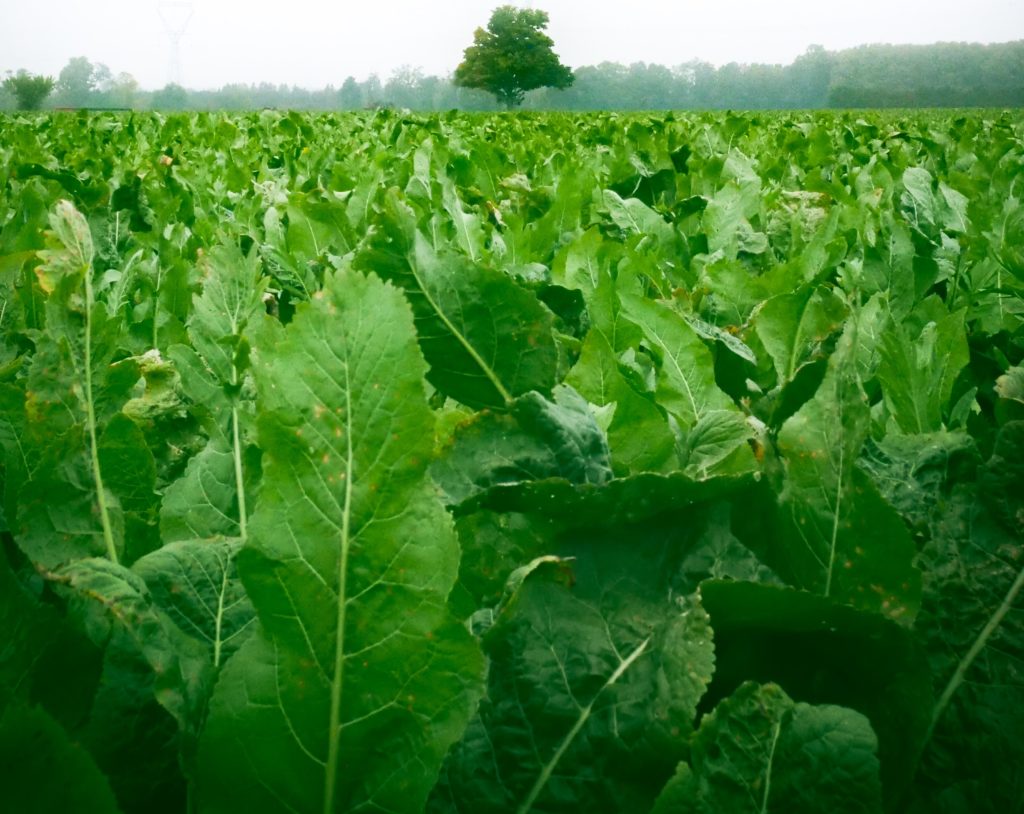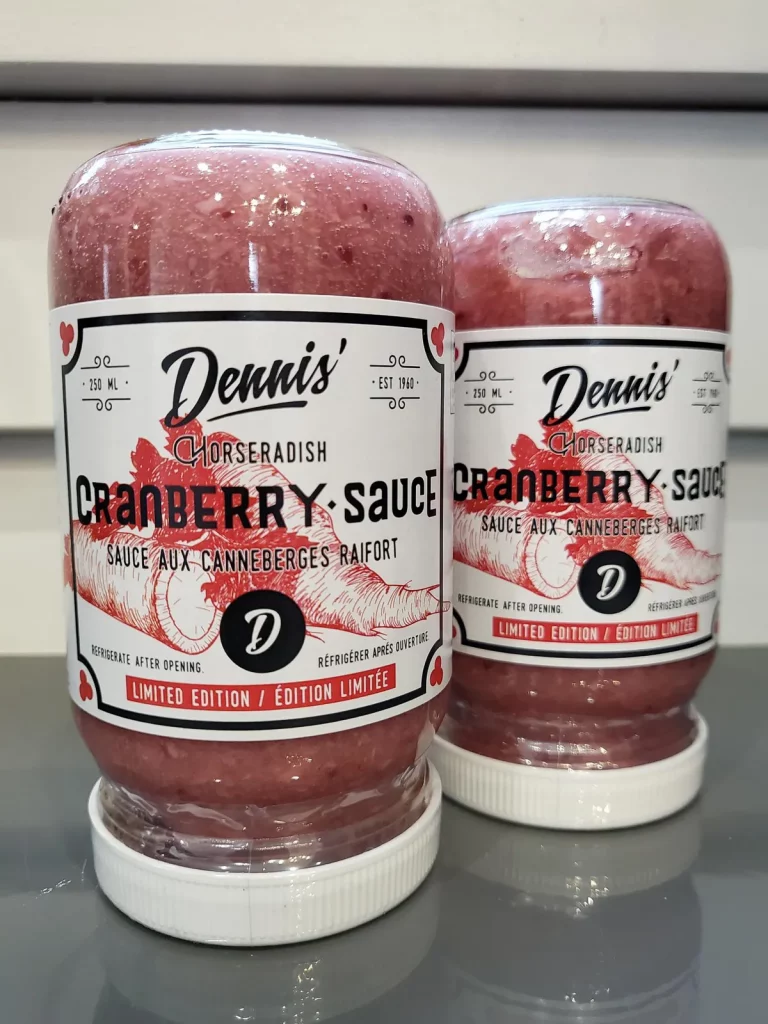THE GLOBE AND MAIL ARTICLE: THE FARM-TO-TABLE JOURNEY OF HORSERADISH
THE FARM-TO-TABLE JOURNEY OF HORSERADISH
Published: DECEMBER 10th 2021 by THE GLOBE AND MAIL

Originally founded in 1960 by Oxford County local Dennis Gyorffy, who began bottling the spicy sauce in his basement in Tillsonburg, Dennis’ Horseradish passed through the hands of several area families until it was acquired last summer by “the three Marks.”
The partners, who all met at Western’s Ivey Business School, each brought something to the endeavour: “[Mark] Vandenbosch, who’s got a background in agriculture, thought that we could grow better horseradish in Norfolk County than anyone in Canada,” says Mark Healy, nodding to the area’s arid, sandy soil which is ideal for the fiery root vegetable. “I came at it from the brand side, and thought we could really do something with the brand’s history and heritage.”
The last Mark – Whitmore – grew up in Norfolk County, and knew the Hantz family, who had run the business for decades. “Whitmore actually joked to friends, as far back as 30 years ago, that if Dennis’ ever came for sale, he’d buy it,” says Healy.
After a year of learning the family recipes from master horseradish maker Rick Hantz, Whitmore, who lives on Turkey Point, is now overseeing the brand’s Delhi production facility.
The farmers: Lindsay Menich and Drew Patterson
Before horseradish can be processed, it needs to be grown. Dennis’ 16 acres of root is grown for them by Lindsay Menich and Drew Patterson in nearby Teeterville, Ont., meaning this horseradish is uniquely Norfolk County from “farm to fork,” as Healy puts it.

In late spring, Menich and Patterson plant three-inch cuttings from last year’s root. “You’re hoping for a very hot, dry summer,” Healy says, going on to explain that farmers deliberately want to “stress” the root by making it thirsty so it produces a protective oil that gives the root its signature heat.
Working with hyperlocal producers means they can control the freshness of their root, which directly correlates to how much heat the horseradish has, something other manufacturers who buy their root through an intermediary aren’t able to do as easily. “If you’re eating horseradish and it’s hot, that’s a good thing. It means it was fresh when it was bottled,” he explains.
Dennis’ offers a cranberry sauce- flavoured horseradish for the holiday season.
The producer: Dennis’ Horseradish
If you stumble into Dennis’ Horseradish’s production facility and see people wearing gas masks, do not be alarmed. It’s a good sign that the horseradish they’re processing is fresh and full of nasal-passage-opening flavour. A member of the same plant family as mustard and wasabi, horseradish root contains a chemical compound called allyl isothiocyanate that gives it that signature heat. Of course, while that pungent punch is something condiment lovers chase by the spoonful, in large quantities it can make your eyes water and even irritate your throat – something the team behind Dennis’ Horseradish know all about.
The production process starts with tumble-washing the roots in water to remove the dirt. “At that point, you’ll know you’ve got horseradish,” says Healy, “because when you ding up the root you’re starting the off-gassing process. If you’ve grown really hot root, it’s hard to be in the room with it.”
From there, it’s ground, then mixed with vinegar, water and other ingredients – beets for the beet relish, for example, milk to cut the heat in their milder Original style, or mustard oil to preserve that zing in the Hot and Extra Hot.
“In a day, we can do three batches and produce about 5,500 jars,” says Healy. They’ve experimented with a maple horseradish, and for the holiday season they’ve got a cranberry version as well. “We’re on a mission to change the traditional view that horseradish [is] just for roast beef,” says Healy. They’re already exporting in bulk to the U.S. and overseas – a container just went to a seafood sauce producer in Asia – and this is just the beginning.
“Our growth equates to local farming growth, to local employment, and all those economic impacts and benefits are real.”
Click Here to view the full article

